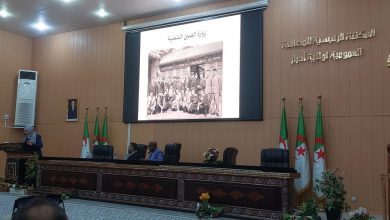A remarkable archaeological discovery has been announced by the Egyptian Ministry of Tourism and Antiquities: a massive military fortress dating back over 3000 years to the New Kingdom period. This significant find was made during excavations conducted by an Egyptian archaeological mission at the Tell el-Kharouba site in the Sheikh Zuweid area of North Sinai, near the Mediterranean coast, strategically positioned on the border between Egypt and Palestine.According to the Ministry’s statement, this discovery marks a valuable addition to Egypt’s rich archaeological record. The fortress is considered one of the largest and most important military fortifications uncovered along the ancient Horus Military Road, a vital strategic artery connecting ancient Egypt and Palestine. Excavation results reveal the impressive defensive planning employed by the New Kingdom pharaohs, who established a network of fortresses and fortifications to protect Egypt’s eastern borders from potential threats.
Dr. Mohamed Ismail Khaled, Secretary-General of the Supreme Council of Antiquities, explained that the mission successfully uncovered a substantial portion of the fortress’s southern wall, stretching approximately 105 meters in length and 2.5 meters in width. This section includes a secondary entrance measuring 2.20 meters wide. To date, eleven defensive towers have also been identified. The northwestern tower and sections of the northern and western walls have also been located, despite challenges posed by shifting sand dunes covering large parts of the site.
Mohamed Abdel-Badi’, Head of the Egyptian Antiquities Sector, highlighted the fortress’s unique architectural design, featuring a 75-meter-long zigzag wall extending from north to south, dividing the fortress internally. This wall surrounds a residential area designated for soldiers, showcasing the ingenuity of ancient Egyptian architects and their ability to adapt to the harsh desert environment. The fortress itself covers a substantial area, reflecting its importance as a strategic military outpost.
Numerous significant archaeological finds were unearthed within the fortress, including fragments of pottery and foundation deposits dating back to the first half of the 18th Dynasty. A pottery fragment bearing the seal of King Thutmose I was also discovered. Additionally, quantities of volcanic stones, believed to have been transported by sea from the Greek islands, were found, suggesting ancient maritime and trade connections. A large oven for baking bread, along with remnants of hardened dough, were also uncovered, indicating that the fortress was not only a military site but also a self-sufficient center for the daily lives of the soldiers.
Dr. Hisham Hussein, Director-General of Sinai Antiquities, reported that the fortress underwent multiple phases of restoration and modification over time, particularly in the design of the southern entrance, which underwent several changes. The discovery provides valuable insights into the military strategies, architectural prowess, and daily life of ancient Egyptians during the New Kingdom period, further enriching our understanding of this crucial era in history. The ongoing excavations promise to reveal even more about this important site and its role in safeguarding Egypt’s eastern frontier.
Related: More algeria articles on DZWatch
Source: External reference
dzwatch.dz
Written by Noor Eleslam

